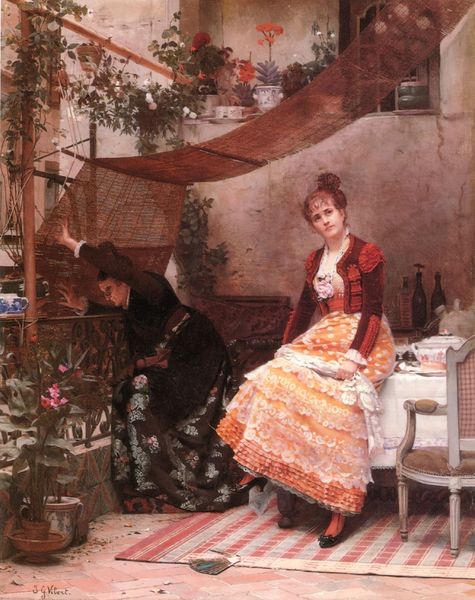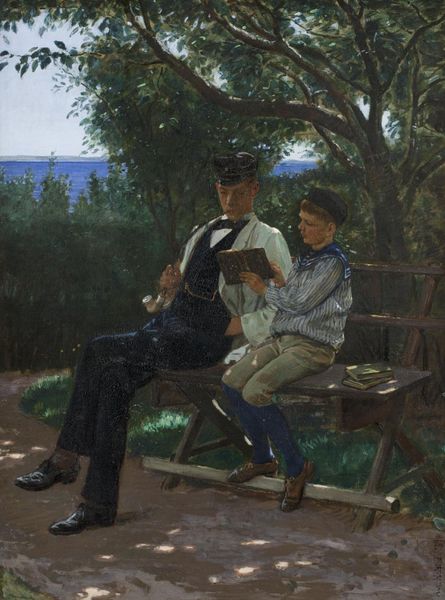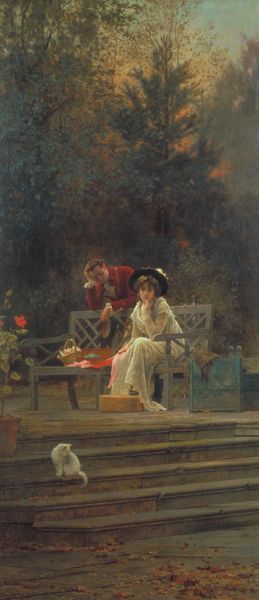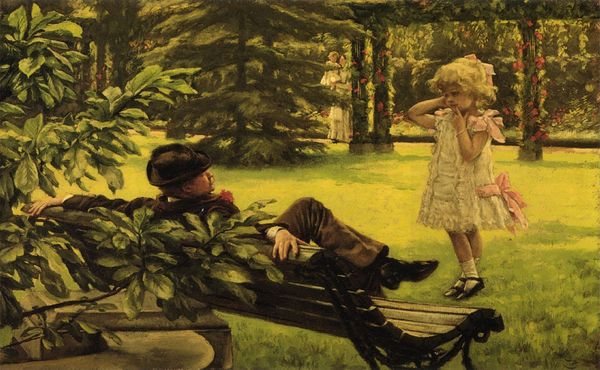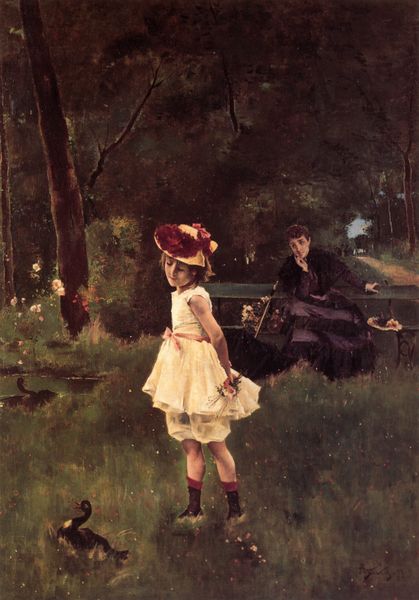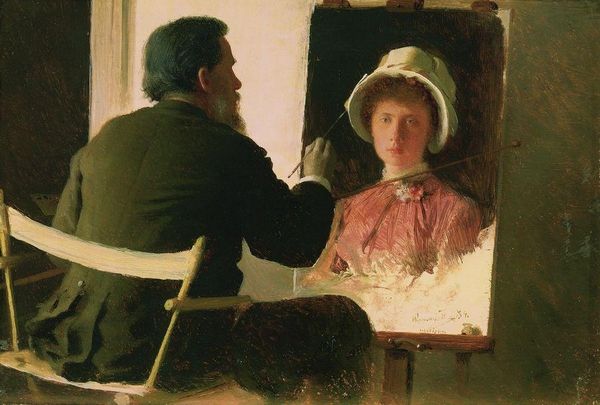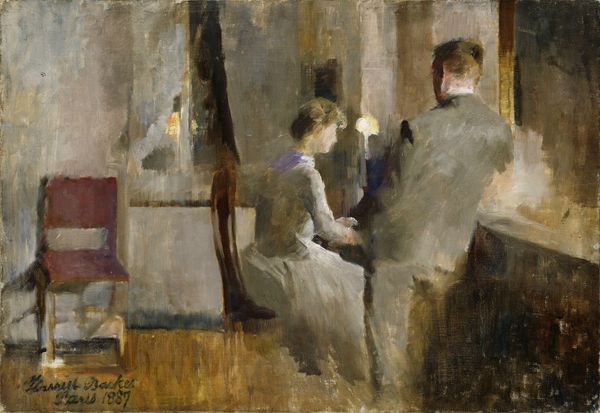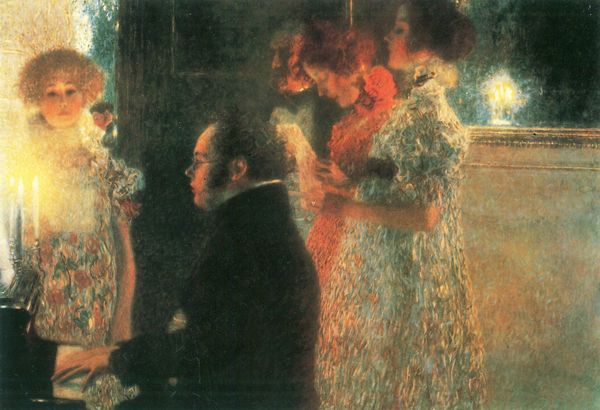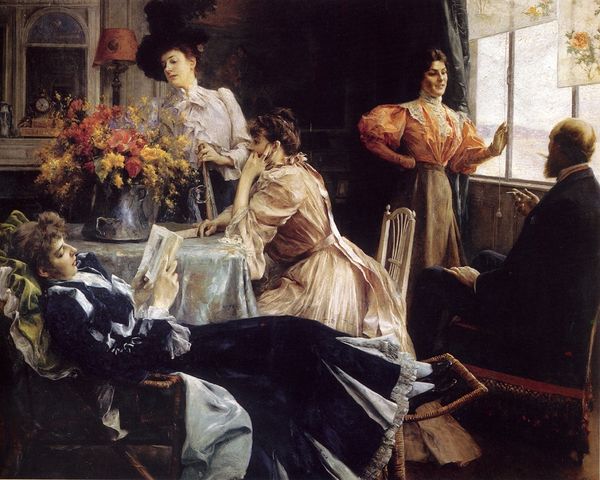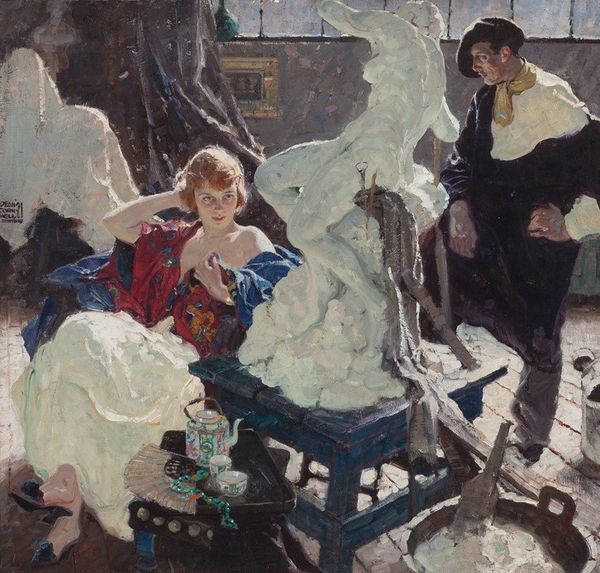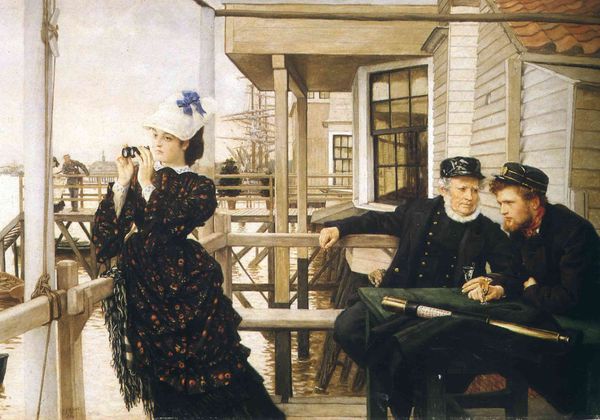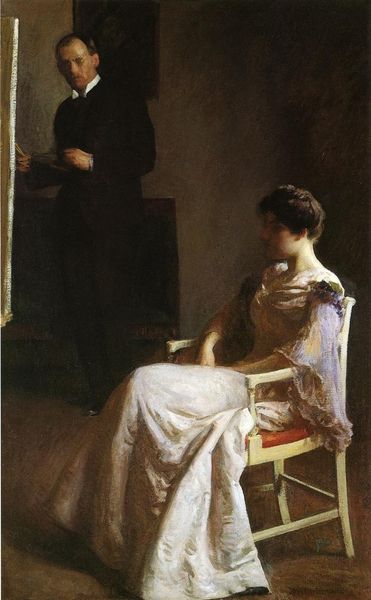
Copyright: Public domain
Editor: Here we have Vladimir Makovsky's "Conversation," painted in 1880 using oil on canvas. It strikes me as a study in contrasts – the vibrant colors in the woman's clothing against the darker tones of the man's attire and the somewhat subdued background. What elements stand out to you? Curator: Indeed. Formally, the composition orchestrates a visual dialogue between light and shadow, texture and flatness. Note the impasto technique employed, especially in the rendering of the landscape, which creates a palpable sense of depth, counterpointed by the relative flatness of the figures. Editor: So you're saying the artist intentionally played with the textures of the oil paint? Curator: Precisely. Consider the materiality of the paint itself as a signifying element. The juxtaposition of the smooth, controlled brushwork on the figures with the more gestural, impasto application in the landscape constructs a visual hierarchy. Editor: Interesting. The landscape almost becomes another character, influencing the interaction? Curator: It functions not merely as a backdrop, but as an active participant within the visual rhetoric of the painting. Ask yourself: how do these formal choices shape our understanding of the interaction between the figures? Editor: It pushes me to focus on their immediate environment; it's all quite intentional and planned. Thanks, this helps clarify my understanding! Curator: The pleasure is all mine. This structured observation enhances appreciation for its visual dialogue.
Comments
No comments
Be the first to comment and join the conversation on the ultimate creative platform.
